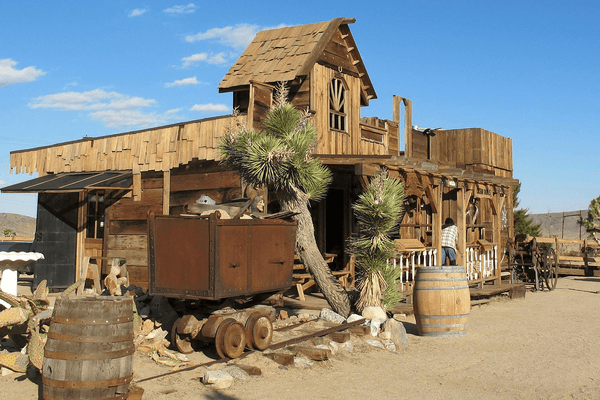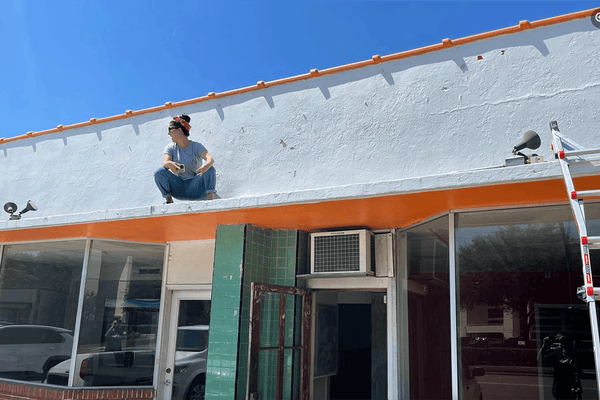BOURBON BARREL SCIENCE
HOW BOURBON IS BORN
Ever wonder why certain bourbon expressions taste (and look) different than others? The process of making, fermenting, storing, and aging each type of bourbon factors into its overall flavor. Additionally, the ingredients and mash bill used to make a bourbon can affect its final taste. Learn about bourbon barrel science, including why the type of wood and char level used to make a bourbon barrel has an impact on the finished product...

The Process of Making Bourbon
Making bourbon involves following several steps, and they must be followed exactly to classify the spirit as bourbon. All bourbon is whiskey, but not all whiskey is bourbon, as some distillers use different processes when creating whiskey products for consumers. One requirement for bourbon is a mash bill that includes at least 51% corn. The other 49% of the mash profile can contain any blend of grains, as long as the mixture is more than half corn. Additionally, a bourbon distiller can't add any additives other than water.
After making the mash, the next step is fermenting the compound, which involves adding yeast and allowing it to convert sugar into other molecules. During the fermentation process, distillers often add more yeast and sour mash to reduce bacteria growth and maintain the proper pH level. These additions can create a better environment for the activation of the yeast. Before fermentation, the mash is more like a bowl of oatmeal. After fermentation, it converts to what distillers used to make bourbon.
Following its fermentation, bourbon mash goes through the distillation process. This step purifies the liquid through a process known as vaporization. Distilling bourbon involves heating up ethanol and collecting the vapor produced when it turns back into a liquid. This liquid, called distillate, is very pure. In some cases, bourbon goes through the distillation process multiple times to remove any impurities that may still be present. Many distillers refer to distillate as “white dog” or moonshine.
Another requirement for a spirit to qualify as bourbon is going through the aging process in a new charred oak barrel. A distillery must place the distillate into this type of barrel when it reaches at least 80 proof but no more than 125 proof. The barrel plays a major role in the overall taste of the distilled spirit.
Impact of Wood on Overall Flavor
When distillate goes into a charred oak barrel, it can remain there for years. The amount of time spent within the barrel has a significant impact on its overall flavor, appearance, and essence. But the condition of the barrel also plays a role in the final product. The science behind creating a bourbon barrel takes the following factors into account:
- The level of char inside the barrel.
- The sugars in the wood.
- The presence of natural congeners.
Bourbon barrel manufacturers can char the wood for between 15 and 55 seconds. A lower-level char typically produces toasted wood, while a higher-level char can push the wood's sugars toward the heat source and lead to caramelization. When the sugars caramelize, this can provide a protective layer on the inside of the barrel while sweetening the distillate through its aging process.
When placed into the charred barrel, distillate is known as white dog. But its appearance is quite different from what aged bourbon looks like, so you may wonder how and when it changes. The presence of the sugars in the wood and the barrel's char level affect the overall appearance. These factors aid in the transformation from a colorless liquid to a more viscous material that's golden amber.
The Presence of Esters
When learning more about the science behind bourbon barrels and the manufacturing process, you might hear about esters, which are a combination of alcohols and acids. During the fermentation, distillation, and aging processes, esters form in the mixed ingredients and deliver different flavor notes. When getting a bit more scientific, you learn that when an alkyl group replaces a hydrogen atom in the carboxylic acid, an ester forms. The alkyl group includes butyl, ethyl, methyl, and propyl alcohol, among other types of alcohol.
Since yeast and other ingredients used in bourbon manufacturing come in various species and strains, the esters that form differ drastically, resulting in varying flavor profiles. Examples of a few of the esters produced by various yeast strains and bourbon barrels include vanillin, furfural, 5-hydroxymethyl furfural, octyl acetate, and guaiacol. These might produce notes of vanilla flavor, a smoky or leathery taste, a citrus flavor, or the essence of creamy fudge.
Climate and Storage Location
Every distiller takes its own approach to the aging process, including the bourbon barrels' char levels and where they store those barrels while the bourbon ages. The chosen location for bourbon barrel storage affects the final product, particularly if the barrels are kept outdoors. Changing climate conditions alter the condition of the barrel and the material contained inside. When it gets warmer during the Kentucky summer months, the spirit within the barrel expands, resulting in a pressure increase. Rising pressure pushes the bourbon deeper into the wood's pores, which can adjust its sugar content and overall taste.
As the climate cools down during the late fall and winter, the spirit comes back out of the wood but maintains the adjusted flavor profile. Since this particular type of liquor must remain in a bourbon barrel for at least two years, it might go through the process multiple times as the seasons change each year. Storing barrels indoors can reduce these climate fluctuations, especially if distillers maintain a more consistent climate throughout the aging process.
Understanding the science behind bourbon barrel storage and how this spirit ages can help you gain a better appreciation for your favorite cocktail. Whether you enjoy sipping bourbon on the rocks or mixing it into an old fashioned, you're sure to notice the distinct differences between the various types based on how they're made. At Rabbit Hole Distillery, we offer a selection of bourbon options to connoisseurs of the spirit, including extremely small batch and single-barrel options for those with premium tastes.
Learn more about everything "bourbon" in this complete guide to the bourbon making process, common terms and definitions and more.






